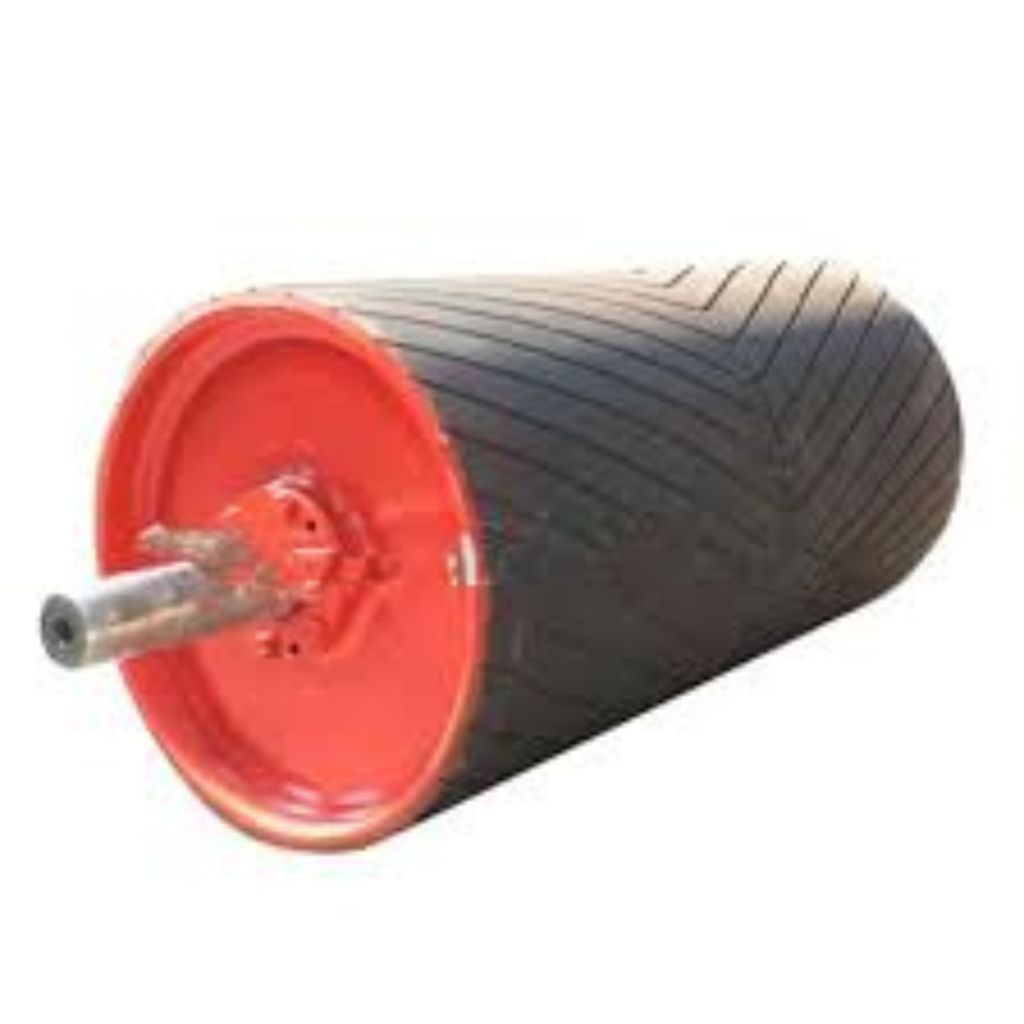PULLEYS

Conveyor belt systems rely on various types of pulleys to facilitate smooth movement and efficient power transmission. Let’s explore the key types of conveyor belt pulleys:
Drive Pulley (Head Pulley): The drive pulley is essential for propelling the conveyor belt. It is typically mounted externally using bearings and driven by a motor and reducer. Drive pulleys can be either flat-faced or crowned, with some having lagging to reduce belt slippage1. They play a central role in maintaining belt tension and driving the system.
Idler Pulley: Positioned in non-drive locations, idler pulleys rotate freely and are driven by the belt. They help guide and support the belt, ensuring proper alignment and tension. Idler pulleys come in various designs, including flat-faced, crowned, and narrow-bodied options. Crowned pulleys are suitable for thinner belts, while narrow-bodied rolls aid in tracking the belt when other methods are unavailable23.
Return (Tail) Pulley: Located on the return side of the conveyor, the return pulley redirects the belt back to the drive pulley. It assists in maintaining tension and preventing sagging. Return pulleys are crucial for overall system performance4.
Snub Pulley: The snub pulley is used to increase the angle of contact between the belt and the drive pulley. It enhances traction and prevents belt slippage, especially in applications with steep inclines or heavy loads.
Take-Up Pulley: This pulley is responsible for adjusting belt tension. It ensures proper tensioning as the belt stretches or contracts due to temperature changes or wear.
Bend Pulley: Bend pulleys guide the belt around corners or curves. They help maintain belt alignment and prevent excessive stress on the belt during directional changes.
